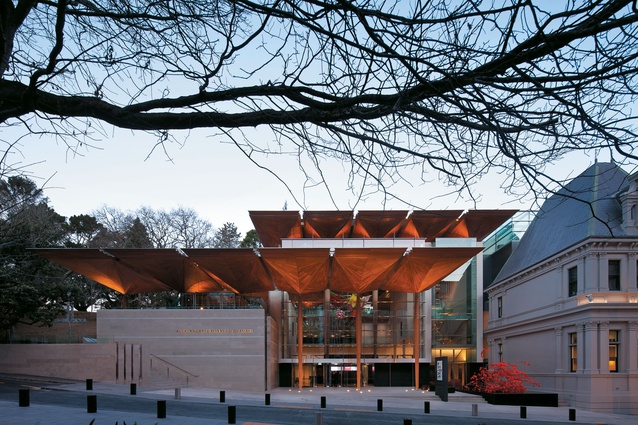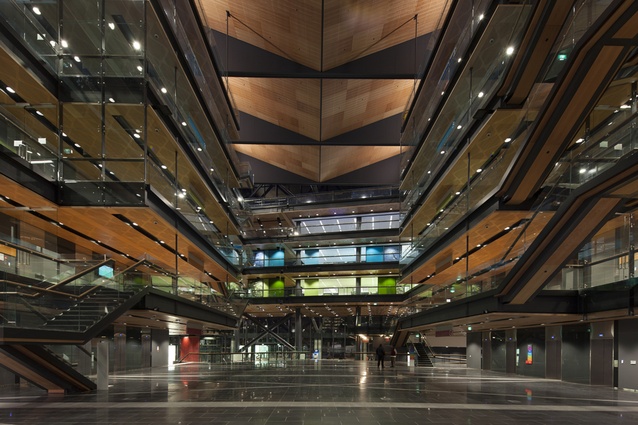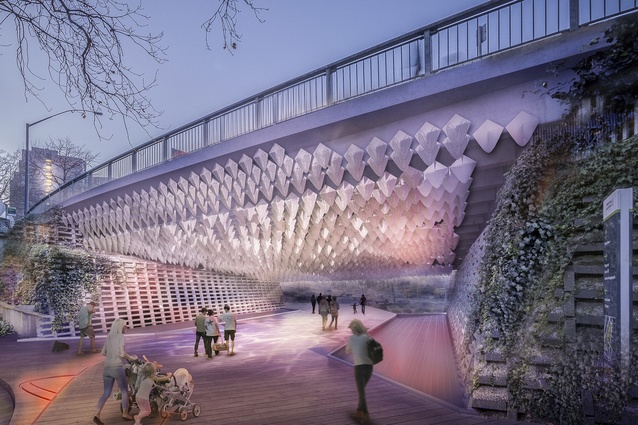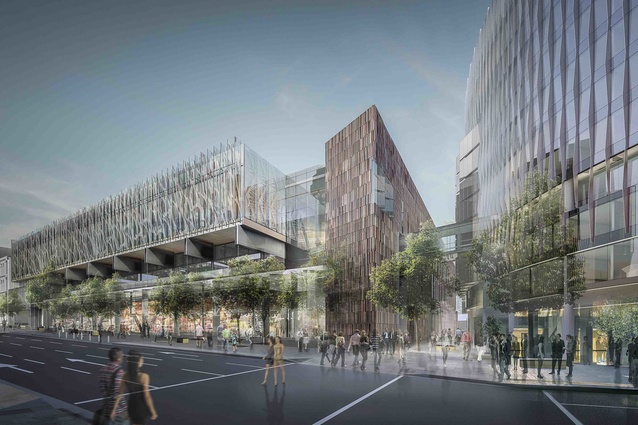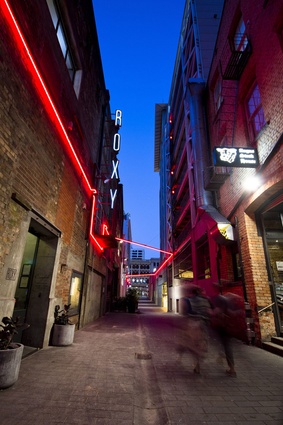Connect locally, inspire globally
Warren and Mahoney's John Coop writes on countering homogenisation of architectural work through the appreciation and understanding of identity.

We live in a world where architectural (and all) imagery is ubiquitous. An image of a new bulding in New York screen-grabbed online on Monday can influence a design brief in Wellington, New Zealand on Tuesday.
How do we ensure that we counter this homogenisation in our highly connected world? A valid response is to promote the appreciation and understanding of identity, and how it can be translated into built form to lend our work meaning and integrity.
Memorable and humane
The work that is celebrated globally in architecture is the work that is both memorable and humane. Memorable architecture – architecture that stays with us in our imagination – is often achieved through approaching the design process in a different way. Originality lends the shock of the new. But to achieve a humane result we must mine the familiar. Humanity comes by acknowledging context and translating what already resonates with people.
An architect who has left a formidable legacy in this regard is the great Italian architect, Renzo Piano. Piano’s work is both critical and contextual. His work sits within a stream of late 20th century modern architecture that has been defined and described as ‘critical regionalism’ – work that integrates context, local identity and tradition with the tenets of modernism.
He is a master at interweaving identity with original and abstract form, often also involving innovation in structure and materials. His work regularly redefines form, creating new typologies and new experiences for the human beings that occupy the spaces he designs.
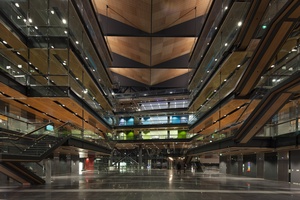
Two local exemplars
In Auckland, two examples come to mind that balance the tension between modern architectureand the expression of identity. Auckland Art Gallery, designed by FJMT (Sydney) achieves this. The traditions of structure and space that it calls on are neither overtly Polynesian nor typically Western, yet somehow it feels deeply familiar to all of us.
The Warren and Mahoney-designed Manukau Institute of Technology and Transport Interchange also transcends usual categorisation. It is unapologetic in its structural expression, yet uses materials and has a palette that is immediately ‘of its place’. The pattern of the external diagrid structure, the rich warmth of the ceiling, the use of timber and stone, the decision to leave the teaching spaces open to the atrium and to have the trains pass beneath the building, all came about through extensive consultation with users and local cultural groups.
It is hugely satisfying to see the degree to which the building has been embraced by the community because it simply ‘feels right’. Finding such a solution while unlocking the functional requirements of the brief is the great success of both the client and the design team.
Why identity matters

There’s more work to do within the practice of architecture in New Zealand, and within Warren and Mahoney itself, to come to a deeper acknowledgement of the importance of context. The practice is engaged in significant civic and public projects that are expected to carry meaning. In order for New Zealand architecture to move forward there needs to be depth.
Within the studio our collective commitment to acknowledging, appreciating and celebrating matters of identity is about developing this depth in our practice. It is important in order for the work to endure. It is also important in order for our people to feel they’re in the right place. Building buildings is valuable, but it is not enough. We need to achieve architecture. We are here to create fulfilling spaces for the community that tell the story of who we are; of what is important to us in this time and place.
In New Zealand we have a rich, evolving dialogue occurring between the traditions of Tangata Whenua and European and other cultural traditions. There’s an incredible opportunity to bring that dialogue into architecture. One of our long-term projects is to instil an affinity for, and understanding of, Māori identity within our culture and work.
To that end we have recently initiated Te Matakīrea’ – an advanced Māori design unit within our studio. Ngata Tapsell joined us last year to head this unit, and alongside Ngata we have Māori graduate architects in this team. This gives new opportunity to bring a highly contemporary and urban sensibility to the way in which the many strands of Māori identity are integrated within New Zealand architecture.
Urban centre decides city’s identity

At a personal level I am also engaged with and excited by the challenge of creating a stronger sense of identity for the city in which I live. This includes a role as chair of the City Centre Advisory Board, a group guiding Auckland Council and the Waitemata local board on the development of the city centre. We are excited about the significant projects we are involved in that will transform the city centre, such as Commercial Bay and the New Zealand International Convention Centre.
These large-scale developments are driven by commercial objectives. They are designed to provide a financial return. And so they will. However, they have also enabled us to transform the experience of the city at street level for the buildings’ users, visitors and passerby. And we must not forget the 50,000 people who live in the city centre – up from 1,500 when I flatted in High Street in the early 1990s. The biggest change to the city centre has been a social one, from CBD to a vibrant, multi-cultural community.
The big projects are exciting because they have a big impact, but we need to be just as focused on making sure we do well with the smaller scale places and spaces. We are seeing the progress in humanising parts of Auckland that have been forgotten. Fort Lane, with its neon artwork and discreet doorways into some of the city’s best bars and restaurants, is an example.
Warren and Mahoney’s work on the Myers Park underpass, also incorporating public art, is another. Making these places satisfying to occupy is key. Liveable cities do not sanitise or erase the grit and the grain. Continuity is critical to identity. We must offer safety and delight at the fine scale. A city is judged by these things.
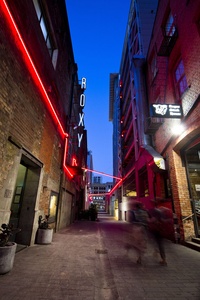
Taking a leadership position
At 46, I’m part of the ‘missing Generation X’ of architects in New Zealand who managed to graduate in the early 90s and enter practice in a market almost completely bereft of work (later leaving for London). Generation X needs to lead through bridging between our ‘elders’ and the talented, young architects coming through.
Warren and Mahoney, too, has a responsibility to lead, as one of New Zealand’s oldest and largest practices. Since my return to New Zealand in 2001, Warren and Mahoney has undertaken a constant process of modernisation; a striving to break free of the traditional narratives and paradigms of practicing architecture in New Zealand and become a multi-disciplined (and now Australasian) design firm. We have spent the last 15 years both designing and developing the practice alongside a strong team.
And, yes, they’re mainly men. There is no doubt that the practice is male dominated, particularly at the senior level. We’re acutely aware of this and have resolved to create a framework for action. Gender balance is important to personal fulfilment. We also recognise that the internal culture and design outcomes we wish to create require a more balanced practice.
This issue is not confined to Warren and Mahoney. It’s an issue for our profession, the industry, and more broadly for the leadership, ownership and governance of business within New Zealand. I am committed to righting this imbalance at Warren and Mahoney. I would like to spend the next 15 years working alongside strong men and strong women. I hope we can look back with pride, knowing we have influenced a change for the better within the practice and the profession.
This article first appeared on the Warren and Mahoney website. Read the original here.

